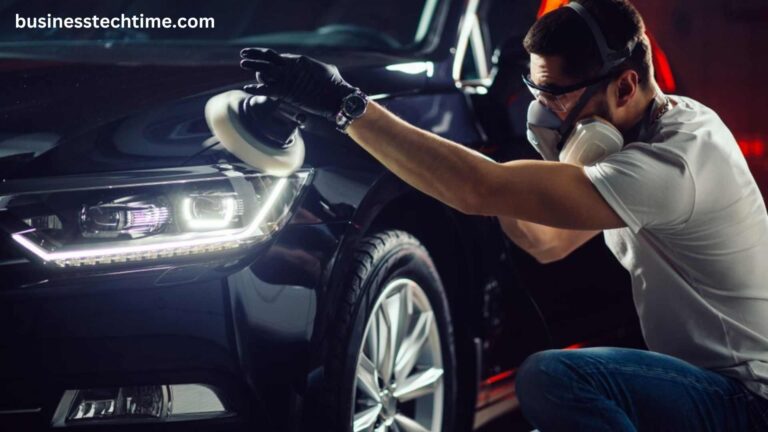Embracing Cyber Resilience: Strategies for Safeguarding the Automotive Industry
Table of Contents
- Key Takeaways
- Introduction to Automotive Cybersecurity
- Building a Cyber-Resilient Infrastructure
- Critical Technologies for Enhancing Vehicle Security
- Cyber Threats Facing the Automotive Industry
- Integrating Cybersecurity in Auto Manufacturing
- The Role of Policy and Standards in Automotive Cybersecurity
- Collaboration and Sharing of Cyber Threat Intelligence
- Training and Awareness: The Human Element of Cybersecurity
- Future of Cybersecurity in the Automotive Industry
- Conclusion
Key Takeaways
- The convergence of automotive technology and cybersecurity is increasingly vital for vehicle safety and integrity.
- Effective cyber resilience depends on comprehensive strategies, including advanced technology deployment, workforce training, and adherence to strict industry standards and policies.
- Collaborative efforts and sharing cyber threat intelligence within the industry form the backbone of a robust defense against evolving cyber threats.
Introduction to Automotive Cybersecurity
In recent years, cybersecurity in the automotive industry has shifted from a niche concern to a central feature of vehicle design and functionality. As cars become more like “computers on wheels,” the need for stringent cybersecurity measures is no longer optional but imperative. Instances such as Fortinet’s work with Chinese automotive manufacturers elucidate the comprehensive measures being implemented to safeguard against evolving threats, ensuring that vehicles are technologically advanced but also secure and trustworthy.
Tackling cybersecurity in the automotive industry involves an in-depth understanding of controllable and uncontrollable factors. This encompasses everything from in-car communication systems and autonomous driving components to the personal devices passengers bring into the vehicle, all adding complexity to a vehicle’s cybersecurity landscape.
Building a Cyber-Resilient Infrastructure
Cyber resilience is gaining prominence in industries grappling with digital threats, like the automotive sector. It transcends the reactive cybersecurity approach, emphasizing the capacity to anticipate, withstand, and swiftly recover from cyber incidents. A resilient automotive cybersecurity framework encompasses the entire lifecycle of a vehicle, from initial design phases to end-of-life software support, ensuring seamless operation despite cyber adversities. Achieving such resilience demands perpetual vigilance throughout the vehicle’s lifecycle. Manufacturers must swiftly deploy critical security updates in response to emerging threats and proactively anticipate potential risks, persistently refining security protocols. Fortinet’s work with Chinese automotive manufacturers exemplifies efforts in this realm. Their work aims to fortify cybersecurity measures, enhancing resilience against digital threats across the automotive industry.
Critical Technologies for Enhancing Vehicle Security
Technological innovation is the lifeblood of modern cybersecurity strategies in the automotive domain. Deploying AI-driven algorithms for instantaneous threat detection and mitigation remarkably transforms vehicle protection. Such systems are skilled at recognizing patterns, deducing anomalies, and initiating autonomous countermeasures against intrusions. Machine learning (ML) capabilities enable these systems to evolve, improving their accuracy and efficacy in a threat landscape that is perpetually changing.
Yet it’s not just AI and ML that are pivotal; a host of other technologies, including advanced encryption for data privacy, Hardware Security Modules (HSM) for secure cryptographic operations, and robust, secure boot systems, are integral for the fortification of vehicles against cyber intrusions. These technologies form a multi-layered shield, encapsulating critical vehicle systems within a secure technological cocoon.
Cyber Threats Facing the Automotive Industry
The cyber threat matrix for the automotive industry is vast and dynamic, including risks such as hacking, ransomware, and even the potential for remote control over vehicle systems. To fathom the scale of potential fallout. One must consider financial loss, reputational damage, and the real-world implications of automotive cyber-attacks, such as jeopardizing human lives and public safety. As vehicles become increasingly automated. The scope for cyber-induced vehicular accidents also rises, making proactive cyber defense mechanisms critical for manufacturers.
Moreover, the threat landscape is not static; it evolves as rapidly as the technology embedded within modern vehicles. New vulnerabilities can emerge with each innovation, each software update, and every advancement in vehicle-to-everything (V2X) communications, demanding a dynamic approach to cybersecurity.
Integrating Cybersecurity in Auto Manufacturing
The manufacturing phase is where the concept of ‘security by design’ is most potent. Here, cybersecurity is infused into auto manufacturing from the inception stage, with every component and system designed with its unique security profile. This outline recognizes that the most effective way to mitigate a cyber threat is to neutralize it before it becomes problematic.
Such integration extends to suppliers and partners within the automotive supply chain. All stakeholders must be aligned on cybersecurity standards, ensuring that each part meets the rigorous security demands expected of modern vehicles, no matter how small. Regular assessments and audits are critical in maintaining these standards during the manufacturing phase and throughout the vehicle lifecycle.
The Role of Policy and Standards in Automotive Cybersecurity
Implementing policies and industry standards plays a significant role in bolstering automotive cybersecurity. Regulatory frameworks at national and international levels set the cybersecurity baseline to which manufacturers must adhere. For example, the European Union Agency for Cybersecurity (ENISA) and the National Highway Traffic Safety Administration (NHTSA) in the United States have spearheaded initiatives to improve automobile cybersecurity.
Staying abreast of such policies is a multifaceted challenge that auto manufacturers must embrace. It’s not solely about avoiding legal entanglements; adherence to these standards is also a means to earn consumer trust and demonstrate the brand’s commitment to customer safety amidst a digitalizing world.
Collaboration and Sharing of Cyber Threat Intelligence
Confronting the cyber threats facing the automotive industry demands a collective effort. Shared threat intelligence is a cornerstone of modern cybersecurity practices, with industry giants, startups, and even competitors disclosing vulnerabilities, threats, and incidents that could have a cascading effect across the sector. Collaboration allows for faster response times, pooling of best practices, and a united front in cyber defense that is far more effective than isolated efforts.
Various consortia and task forces enhance this collaborative environment, creating secure channels through which organizations can share intelligence and coordinate responses to cyber threats. These platforms are increasingly recognized as an invaluable resource for manufacturers who aim to preempt and neutralize potential security challenges.
Training and Awareness: The Human Element of Cybersecurity
As with many domains of digital security, the automotive field recognizes that technology alone cannot constitute an ironclad defense. Personnel at all levels of auto manufacturing play a crucial role in safeguarding against cyber risks. Creating comprehensive cybersecurity training programs and regular awareness campaigns equips employees with the knowledge and tools to identify and address vulnerabilities efficiently.
A culture of security mindfulness must permeate the organization, from the executives to the factory floor, promoting a mentality. Where every employee actively participates in the cybersecurity framework. Ongoing training programs ensure. That employees are a solid first line of defense against cyberattacks rather than the weak link in the security chain.
Future of Cybersecurity in the Automotive Industry
The horizon for the automotive industry is replete with advancements such as connected vehicles, autonomous driving, and electrification. Each adding a layer of complexity to the cybersecurity paradigm. The imperative for manufacturers is not just to contend with the present threat landscape. But to prepare for the evolving contours of future vulnerabilities that these technologies will inevitably introduce.
Navigating this path requires a forward-looking approach, recognizing that new developments in automotive technology and cyber threats will persist. Persistent innovation and vigilant cybersecurity strategies are the hallmarks of a future-ready automotive sector.
Conclusion
In the race to innovate and revolutionize personal transport, cybersecurity stands as an essential pillar in the foundation of the automotive industry. Cyber resilience shapes our vehicles ‘ safety, reliability, and trustworthiness from the first spark of conception to the last turn of the wheel. As cars transform into sophisticated cyber-physical systems, embracing and prioritizing cybersecurity will remain a driving force in the pursuit of mobility that is not only smart but also secure.
For more: Businessechtime.com






